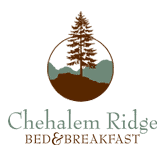








WINERIES OF THE WILLAMETTE VALLEY, OR
Plan Your Trip to Oregon Wine Country
Chehalem Ridge Guests
Sign up for our newsletter and be the first to know about upcoming events and seasonal specials
Willamette Valley Wine Tasting
The Willamette Valley has wineries open all year long and every day of the week and they pour great wine, even when we have Oregon’s famous “liquid sunshine”. The Willamette Valley specializes in the finicky Pinot Noir, but we don’t stop there. Pinot Gris and Chardonnay (no, not California-style, Burgundian-style, so try it!) top our white wine production, but Riesling, mostly dry rather than sweet, is out there too. There’s a growing production of sparkling wine in the Valley, and enough dessert wine makers out there to keep Kristin and guests at our award winning Oregon B&B, very happy. Bigger reds like Syrah, Cabernet Sauvignon and Merlot don’t typically grow well here because of our night-time cooling winds, but there are folks in the Valley making wine from grapes grown in Southern Oregon or Eastern Washington. With more than 400 wineries within an hour’s drive of the B&B, we don’t have a single favorite. We enjoy learning what each guest is looking for in their wine tasting experience, and then pairing them up with some great wineries.
Wine Tasting
We hope you are looking forward to your upcoming adventures to Chehalem Ridge B&B and Oregon Wine Country. If your visit includes going wine tasting, we’d like to let you know that things have changed a bit from past years. Instead of tasting at the wine bar, most wineries will have guests seated at tables and require reservations for tastings. Making winery reservations can be a daunting task as there are more than 600 wineries in the Willamette Valley. We’ve included many of our favorite wineries below to help you decide where to visit, but if you’d like us to do the heavy lifting of scheduling, please see our Winery Itinerary Service.

The ABCs of wine tasting
Perhaps you are a seasoned wine taster, but maybe not. Here are some of our suggestions for having a great experience no matter if you are an old hat or a newbie. Here in Oregon, we’re not fussy about how you do things.
- Leave the extra odors in the bottle. Your sense of smell is the most important sense for processing taste. We want you to smell and taste the wine, not the perfume, cologne or scented hand lotion.
- The folks pouring wine love to help you learn whatever you want to learn, so feel free to ask lots of questions, or none at all.
- Sometimes it’s hard to find the “right words” to describe what you are tasting. That’s ok. You describe it how you taste it, there’s no wrong way. I find it helpful, when I’m wrapping up at one tasting room, to say, “hey, of all your wines, I really preferred this one most, can you point me to another winery who is doing similar wines?” They are very helpful in referring you (like Netflix’s algorithms but with real people and wine!).
- Generally, a winery has one tasting flight available. That’s 1 ounce pours of 4-6 wines. Sometimes the winery will have two choices of flights that you can choose from, say, if you like whites more than reds. Each winery has a different way of deciding what they are pouring. Sometimes they pour wines from all one year, of different vineyards and vineyard blends; that is called a Horizontal. Sometimes they pour different years from one area; that is called a Vertical. A lot of times, it’s some of each. You’ll have a variety of wines to try. The folks pouring for you love to teach you about how the wine was made and can certainly talk to you about what you might pair with it foodwise.
- Ask for a dump bucket and use it. Dump buckets are good for when a wine isn’t totally your thing or if you just want to make sure you stay sober. As wineries have moved to seated tastings rather than at-the-bar tastings, the dump buckets are often not on the table, but a quick ask will get you one to use.
- Stay sober. There is a thing called Palate Fatigue where you don’t notice the nuances in wine after a lot of tasting. Curiously, we notice a “Wallet Loosening Syndrome” that often accompanies Palate Fatigue. When you buy a case of wine, we want to make sure you actually love it so avoid both Palate Fatigue and Wallet Loosening Syndrome by staying sober.
Some tips to help you safely wine-taste:
- Make each tasting experience longer by setting up appointments where you have time and opportunity to really get to know the wine, the winery, the vineyards and maybe the winemaker.
- Spread out your tastings with lunch, a walk in a park. Some wineries allow picnic lunches on site and some allow walking through their property. Ask us for current opportunities for both. BTW, we know our breakfasts are generous and you may think you don’t need lunch but here’s our answer to that: Layer! You have to layer your wine with food, even a light lunch, to combat the effects of wine.
- Sip, Taste, Dump or Spit. Sharing a tasting is an option to reduce intake (and save a bit on tasting fees). You are also welcome to take a small sip and dump the rest. Or, you can sip, swish, taste and spit the remainder into a cup. Wineries are accustomed to this and will provide you with a spit cup when asked. The professionals do this all the time, so don’t feel awkward!
- Hiring a wine tour guide is another good way to learn about our wine region, but also keeps you from driving while drinking. Touring companies are a fun, safe and educational way to experience the Willamette Valley. Contact us for our recommendations.
Wine Tasting
We hope you are looking forward to your upcoming adventures to Chehalem Ridge B&B and Oregon Wine Country. If your visit includes going wine tasting, we’d like to let you know that things have changed a bit from past years. Instead of tasting at the wine bar, most wineries will have guests seated at tables and require reservations for tastings. Making winery reservations can be a daunting task as there are more than 500 wineries in the Willamette Valley. We’ve included many of our favorite wineries below to help you decide where to visit, but if you’d like us to do the heavy lifting of scheduling, please see our Winery Itinerary Service.
American Viticulture Areas
Oregon’s Willamette Valley is an American Viticulture Area – an AVA. Within this large area, however, lie 9 distinct AVAs, where the soil, location and weather combine to give each area a distinct flavor to grapes grown within it, what the French call “terrior”. We have 9 AVAs in such a compact area because the geological history here includes volcanoes, glaciers and floods which have all left their mark on this land and the grapes now grown on the land. While a winery might be in one AVA, it may source grapes from many different AVAs.
Chehalem Mountains AVA
Chehalem Ridge B&B is located within the Chehalem Mountains AVA, where ancient seabeds, glacial sediment, flood waters and wind impacted the soil. We love the smaller wineries that dot this landscape. We often suggest:
Et Fille Wines has their tasting room in downtown Newberg, walking distance to some great restaurants. They have several single-vineyard Pinot Noirs to taste and we use their entry level blend in some of our B&B packages. Especially helpful to new tasters is the Wine 101, which walks you through how to evaluate your wine.
has their tasting room in downtown Newberg, walking distance to some great restaurants. They have several single-vineyard Pinot Noirs to taste and we use their entry level blend in some of our B&B packages. Especially helpful to new tasters is the Wine 101, which walks you through how to evaluate your wine.
Compris Vineyard , is a small boutique winery with small bottlings of individual Pinot Noir clones, in addition to a blend of clones grown on the vineyard. Enjoy a tasting on the Terrace overlooking the vineyards, or in the indoor tasting room, where you can often get a peek at their wine-making process. They also produce Syrah, Tempranillo, and Chardonnay, all grown on site.
, is a small boutique winery with small bottlings of individual Pinot Noir clones, in addition to a blend of clones grown on the vineyard. Enjoy a tasting on the Terrace overlooking the vineyards, or in the indoor tasting room, where you can often get a peek at their wine-making process. They also produce Syrah, Tempranillo, and Chardonnay, all grown on site.
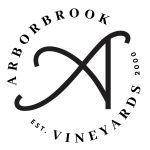 Arborbrook Vineyards, very small producers of Pinot Blanc, Chardonnay, and Pinot Noir. The refurbished horse barn that houses the tasting room also has a small gallery with local art.
Arborbrook Vineyards, very small producers of Pinot Blanc, Chardonnay, and Pinot Noir. The refurbished horse barn that houses the tasting room also has a small gallery with local art.
 Adelsheim Vineyards, one of the valley’s oldest wineries, focuses on Pinot Noir and Chardonnay. You can enhance your tasting with an appointment in the cave or guided hike through the vineyard.
Adelsheim Vineyards, one of the valley’s oldest wineries, focuses on Pinot Noir and Chardonnay. You can enhance your tasting with an appointment in the cave or guided hike through the vineyard.
 Natalie’s Estate Winery, open by appointment only, makes small lots of Pinot Noir from its own vineyards and bigger reds, like Cabernet Sauvignon, Merlot, and Syrah using grapes from the Columbia and Yakima Valleys in Washington.
Natalie’s Estate Winery, open by appointment only, makes small lots of Pinot Noir from its own vineyards and bigger reds, like Cabernet Sauvignon, Merlot, and Syrah using grapes from the Columbia and Yakima Valleys in Washington.
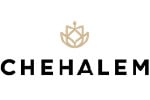 Chehalem Winery has no relation to Chehalem Ridge B&B except that it uses a common Native American geographical name and they have a great product with amazing people with lovely pinots and a large variety of whites, including Reisling and Grüner Veltliner. Their brand new tasting room is located just a 5-minute drive from the B&B.
Chehalem Winery has no relation to Chehalem Ridge B&B except that it uses a common Native American geographical name and they have a great product with amazing people with lovely pinots and a large variety of whites, including Reisling and Grüner Veltliner. Their brand new tasting room is located just a 5-minute drive from the B&B.
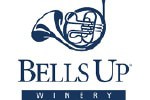 Bells Up Winery, located just downhill from us, is a micro-boutique winery opened by Dave and Sara Specter, who were once guests of ours. Dave is making very small lots of Pinot Noir, Syrah, Rosé and their newest addition, Seyval Blanc. Dave will geek out as much as you want in your private tasting.
Bells Up Winery, located just downhill from us, is a micro-boutique winery opened by Dave and Sara Specter, who were once guests of ours. Dave is making very small lots of Pinot Noir, Syrah, Rosé and their newest addition, Seyval Blanc. Dave will geek out as much as you want in your private tasting.
Ribbon Ridge AVA
Within the Chehalem Mountain AVA is the sub-AVA of Ribbon Ridge AVA. There are so many wonderful wineries to visit but to name just a few:
 Trisaetum makes great Pinot Noir from multiple sites within the Willamette Valley AVA and houses the winemaker’s art gallery in the tasting room. They have an extensive list of whites they can pour from, so a perfect choice for taking a Pinot break.
Trisaetum makes great Pinot Noir from multiple sites within the Willamette Valley AVA and houses the winemaker’s art gallery in the tasting room. They have an extensive list of whites they can pour from, so a perfect choice for taking a Pinot break.
 Yes, there is a story behind the name of Eminent Domaine, and they will share that with you as you enjoy their Pinot Noirs with the view of the vineyards. We like to make them our first visit on a day of tasting.
Yes, there is a story behind the name of Eminent Domaine, and they will share that with you as you enjoy their Pinot Noirs with the view of the vineyards. We like to make them our first visit on a day of tasting.
 French owner and winemaker of Domaine Divio, Bruno Corneaux, brings his heritage to the Willamette Valley with his winemaking. Try his Pinot Noir, but also Chardonnay and Passetoutgrain (French-style Gamay and Pinot blend), made from their biodynamic vineyards.
French owner and winemaker of Domaine Divio, Bruno Corneaux, brings his heritage to the Willamette Valley with his winemaking. Try his Pinot Noir, but also Chardonnay and Passetoutgrain (French-style Gamay and Pinot blend), made from their biodynamic vineyards.
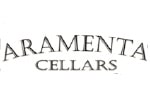 Aramenta Cellars is a teeny-tiny winery on the Century Farm of the Looneys with good Pinot Noir and Chardonnay.
Aramenta Cellars is a teeny-tiny winery on the Century Farm of the Looneys with good Pinot Noir and Chardonnay.
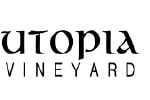 Utopia Vineyard produces small-lot Pinot Noir, Chardonnay and Rosé with Dan at the helm. They are open late, until 6, so a stop by them after check-in and before dinner is a win-win!
Utopia Vineyard produces small-lot Pinot Noir, Chardonnay and Rosé with Dan at the helm. They are open late, until 6, so a stop by them after check-in and before dinner is a win-win!
Laurelwood AVA
Our newest AVA was carved out of the larger Chehalem Mountain AVA based on the location of the Laurelwood soils on the mountain. It follows the ridgeline to the north and houses great wineries like:

What was once a humble garage is now the charming tasting room and art gallery for Potter’s Vineyard. Making just 1,000 cases of wine, they are able to give lots of personal attention to each of their wines. Taste Pinot Noir from the Estate Vineyard or bigger reds from eastern Washington while browsing local (mostly pottery) artists’ work.
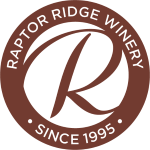 Conveniently located between Newberg and Beaverton, Raptor Ridge Winery sits atop Chehalem Mountain, with the tasting room overlooking the estate vineyard and several (5 on a clear winter day!) mountains. Taste from traditional Willamette varietals like pinot noir, riesling, and chardonnay and also some unique white varietals like Grüner Veltliner and auxerrois.
Conveniently located between Newberg and Beaverton, Raptor Ridge Winery sits atop Chehalem Mountain, with the tasting room overlooking the estate vineyard and several (5 on a clear winter day!) mountains. Taste from traditional Willamette varietals like pinot noir, riesling, and chardonnay and also some unique white varietals like Grüner Veltliner and auxerrois.
 Alloro Vineyard has been built to honor the charming Italian countryside that the owner’s grandmother grew up in. Pinot Noir and Chardonnay, in addition to a Muscat dessert wine, are available for tasting. The farm is also home to fruit orchards, nut trees and herds of goats, cows and sheep.
Alloro Vineyard has been built to honor the charming Italian countryside that the owner’s grandmother grew up in. Pinot Noir and Chardonnay, in addition to a Muscat dessert wine, are available for tasting. The farm is also home to fruit orchards, nut trees and herds of goats, cows and sheep.
 Blizzard Wines always starts a tasting with a French Champagne and then flows into wines they’ve produced with estate-grown Pinot Noir and bigger red varietals bought from growers from outside the Willamette Valley AVA. Columbia Valley AVA Cabernets and Grenaches are a change of pace from the Pinot Noir we grow here.
Blizzard Wines always starts a tasting with a French Champagne and then flows into wines they’ve produced with estate-grown Pinot Noir and bigger red varietals bought from growers from outside the Willamette Valley AVA. Columbia Valley AVA Cabernets and Grenaches are a change of pace from the Pinot Noir we grow here.
 Ponzi Vineyards is one of the area’s founding wineries. They are one of our larger producers, and yet still relatively small. While this may be a label you recognize from their wide distribution, many more wines are available in the tasting room than they sell out of state, including some great Chardonnay and Italian varietals.
Ponzi Vineyards is one of the area’s founding wineries. They are one of our larger producers, and yet still relatively small. While this may be a label you recognize from their wide distribution, many more wines are available in the tasting room than they sell out of state, including some great Chardonnay and Italian varietals.
Yamhill-Carlton AVA
West of Chehalem Ridge B&B is the Yamhill-Carlton AVA. The soil here is predominantly Marine Sedimentary; they occasionally find fossils of shell-based sea life in excavating for new vineyards. Some of our favorites here include:
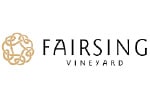 Fairsing Vineyard, with a celtic flair, has Adirondack chairs to enjoy their spectacular view or a labyrinth to meditatively walk. With nearly 200 acres of forest and vines, they have created a unique ecosystem to grow their Pinot Noir and Chardonnay.
Fairsing Vineyard, with a celtic flair, has Adirondack chairs to enjoy their spectacular view or a labyrinth to meditatively walk. With nearly 200 acres of forest and vines, they have created a unique ecosystem to grow their Pinot Noir and Chardonnay.
 Kramer Vineyards has an extensive sparkling wine program which includes the less expensive Celebrate label made with carbonation and the high-end méthode champenoise Kramer label. They use a wide range of grape varietals in their sparkling wines which makes it so fun to try them all. We have their Celebrate Pinot Gris in some of our B&B packages (with our own label!).
Kramer Vineyards has an extensive sparkling wine program which includes the less expensive Celebrate label made with carbonation and the high-end méthode champenoise Kramer label. They use a wide range of grape varietals in their sparkling wines which makes it so fun to try them all. We have their Celebrate Pinot Gris in some of our B&B packages (with our own label!).
 Dominio IV tastes in a lovely farmhouse and a refurbished barn with wine from their vineyards in the Yamhill-Carlton AVA and the Columbia Gorge AVA, which means they have some of the bigger reds like Tempranillo and Syrah in addition to Pinot Noir and some lovely whites. The winemaker, Patrick, creates beautiful labels that visually show how the palate reacts to the wine in the bottle.
Dominio IV tastes in a lovely farmhouse and a refurbished barn with wine from their vineyards in the Yamhill-Carlton AVA and the Columbia Gorge AVA, which means they have some of the bigger reds like Tempranillo and Syrah in addition to Pinot Noir and some lovely whites. The winemaker, Patrick, creates beautiful labels that visually show how the palate reacts to the wine in the bottle.
 MonksGate Vineyard is one of the smaller vineyards within the AVA, producing Pinot Noir, Riesling and Rosé all grown on their 50-acre family-run farm. The Trappist Abbey that abuts the property offers a hiking trail through the woods for contemplative visitors (make sure you check in at reception to get a map).
MonksGate Vineyard is one of the smaller vineyards within the AVA, producing Pinot Noir, Riesling and Rosé all grown on their 50-acre family-run farm. The Trappist Abbey that abuts the property offers a hiking trail through the woods for contemplative visitors (make sure you check in at reception to get a map).
 Bella Vida Vineyard has a steep, windy road to the top where you are rewarded with amazing views of the Willamette Valley. Here you can taste what three different winemakers from around the valley do with grapes from the same vineyard.
Bella Vida Vineyard has a steep, windy road to the top where you are rewarded with amazing views of the Willamette Valley. Here you can taste what three different winemakers from around the valley do with grapes from the same vineyard.
Dundee Hills AVA
Southwest of Chehalem Ridge B&B is the Dundee Hills AVA, known for its volcanic soil named Jory. This is a famous hill with lots of big-name wineries like:
 Archery Summit which has a wonderful view from above and a guided tour and tasting in their caves daily.
Archery Summit which has a wonderful view from above and a guided tour and tasting in their caves daily.
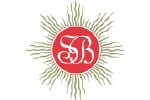 Sokol Blosser Winery is one of the original founding wineries in the Willamette Valley back in the early 1970s. With the second generation now at the helm, the tastings here are now by appointment, with foraging lunches available as well.
Sokol Blosser Winery is one of the original founding wineries in the Willamette Valley back in the early 1970s. With the second generation now at the helm, the tastings here are now by appointment, with foraging lunches available as well.
 Domaine Drouhin Oregon was the first French winery to purchase land in the Willamette Valley and now they make excellent Pinot Noir on both sides of the Atlantic. A special tasting here is the pre-open French and Oregon comparative tasting and winery tour.
Domaine Drouhin Oregon was the first French winery to purchase land in the Willamette Valley and now they make excellent Pinot Noir on both sides of the Atlantic. A special tasting here is the pre-open French and Oregon comparative tasting and winery tour.
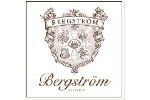 Bergström Wines focuses on bio-dynamic Pinot Noirs with appointment-only tastings. They have some wonderful Chardonnay.
Bergström Wines focuses on bio-dynamic Pinot Noirs with appointment-only tastings. They have some wonderful Chardonnay.
We tend to veer towards the smaller wineries within the Dundee Hills AVA that you might not have heard of. These can be hidden treasures with and often come with great price points, such as:
 Holloran Vineyard Wines is located on vineyards from the 1970s whose grapes go into their Pinot Noir and Chardonnay. They also make Tempranillo from grapes grown on their property in the Eola-Amity Hills AVA. A special treat is when they have older vintages out from their library available for tastings.
Holloran Vineyard Wines is located on vineyards from the 1970s whose grapes go into their Pinot Noir and Chardonnay. They also make Tempranillo from grapes grown on their property in the Eola-Amity Hills AVA. A special treat is when they have older vintages out from their library available for tastings.
Winter’s Hill Estate is located on land that has been in the Gladhardt family for three generations, now producing Pinot Noir, Pinot Gris and Pinot Blanc. They have worked hard to create wildlife habitat on the land and reestablish oak savannahs and you can see milkweed growing near the pond to encourage Monarch butterflies.
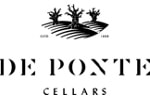 De Ponte Cellars makes a refreshing and bright Melon De Bourgogne (which none of us learn how to say, we just say “Melon” with a French accent).
De Ponte Cellars makes a refreshing and bright Melon De Bourgogne (which none of us learn how to say, we just say “Melon” with a French accent).
 Lange Estate Vineyards and Winery is now in the hands of second-generation winemaker, Jason who plies his hand with single-vineyard bottlings of Pinot Noir and some lovely Chardonnay.
Lange Estate Vineyards and Winery is now in the hands of second-generation winemaker, Jason who plies his hand with single-vineyard bottlings of Pinot Noir and some lovely Chardonnay.
McMinnville AVA
On the way to the central Oregon Coast lies the McMinnville AVA with several wineries like:
 Coeur de Terre Vineyard sits in the foothills of the Coast mountain range and is farmed with organic practices, producing Pinot Noir, Pinot Gris, Chardonnay, with a window from the tasting room into the production facility to watch all the action.
Coeur de Terre Vineyard sits in the foothills of the Coast mountain range and is farmed with organic practices, producing Pinot Noir, Pinot Gris, Chardonnay, with a window from the tasting room into the production facility to watch all the action.
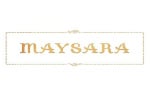 Maysara Winery is located on 532 acres of biodynamically managed land. While you may see the Momtazi Vineyard designation on bottlings around the valley, this is where those grapes are made into the Maysara Winery label.
Maysara Winery is located on 532 acres of biodynamically managed land. While you may see the Momtazi Vineyard designation on bottlings around the valley, this is where those grapes are made into the Maysara Winery label.
Eola-Amity Hills AVA
For the Eola-Amity Hills AVA, we generally suggest making a day trip out of that one area because it’s a bit of a longer drive and there are so many great wineries to explore.
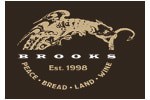 Brooks Winery has an extensive list of wines to pour from, and an on-site chef who makes bites and pairings to enjoy with the tastings. They have a full wine and culinary program including wine education and cooking classes.
Brooks Winery has an extensive list of wines to pour from, and an on-site chef who makes bites and pairings to enjoy with the tastings. They have a full wine and culinary program including wine education and cooking classes.
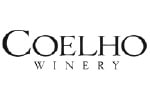 Coelho Winery and tasting room are in the downtown area of Amity. The Coelho family have Portuguese heritage, so they produce a wide array of Pinot Noir, but also some Portuguese-style wines and a couple of amazing Ports.
Coelho Winery and tasting room are in the downtown area of Amity. The Coelho family have Portuguese heritage, so they produce a wide array of Pinot Noir, but also some Portuguese-style wines and a couple of amazing Ports.
 Björnson Vineyard is a small family run winery in the heart of the Eola-Amity Hills AVA producing small lots of Pinot Noir, Chardonnay and some unique Pinot Noir based dessert wines.
Björnson Vineyard is a small family run winery in the heart of the Eola-Amity Hills AVA producing small lots of Pinot Noir, Chardonnay and some unique Pinot Noir based dessert wines.
Please let us know if we can help answer any more questions. We’re delighted you are coming to dive into Oregon wine!
We hope you are looking forward to your upcoming adventures to Chehalem Ridge B&B and Oregon Wine Country. If your visit includes going wine tasting, we’d like to let you know that things have changed a bit from past years. Instead of tasting at the wine bar, most wineries will have guests seated at tables and require reservations for tastings. If you know which wineries you’d like to visit, we highly suggest taking time now to make your reservations with them.
But we know that making winery reservations can be a daunting task as there are more than 600 wineries in the Willamette Valley. To help you out, we now offer a Winery Itinerary Service for a $40 fee per itinerary. Let the area experts at Chehalem Ridge B&B arrange your day of wine tasting. We have set up eight unique itineraries with some of our favorite, smaller wineries. After you choose an itinerary (one per tasting day) and we’ll set up your day of tasting at 3 unique wineries in the Willamette Valley. With most itineraries, we preorder a cheese and charcuterie tray at one winery for you to snack on so you don’t have to worry about lunch.
Transportation, charcuterie and cheese tray (average cost $30), tasting fees (between $30-$45 per person for each tasting, often waived with purchase) and purchases are the responsibility of the guest and this service is best for guests who will drive themselves to tastings. Please see below for more transportation information.
Please note: while we can set these reservations up after you arrive at the B&B, the fee for this service at that point will be $55.
Available Preset Itineraries
The good news is: they are all good choices!
- Artisan & Boutique Winery Itinerary – Our bountiful valley has 9 American Viticulture Areas (AVAs), which are small areas where vineyards are unified by geography and geology. This itinerary includes a mix of smaller, Pinot Noir-focused wineries from among these AVAs. You’ll have a great experience tasting fine, small production wines at the wineries and vineyards in this itinerary.
- Carlton Downtown Walking Itinerary – Drive 25 minutes to Carlton – a small farming town with most wineries per capita in the U.S. – and enjoy a bustling downtown where you can walk to all the tasting rooms and have lunch without driving between wineries. These wineries have a mix of Pinot Noir and other grape varietals.
- “More White Wines, Please” (and Pinot Noir) Itinerary – White Wine lovers, here’s your chance to taste the Willamette Valley’s other grapes, although each of these wineries also produce Pinot Noir, so everybody can find their favorite wine. You might find some French-style Chardonnay, dry Riesling, Pinot Gris, a few sweeter wines and more unique white varietals.
- Big Reds & Pinot Noir Itinerary – Big red wine grapes like Cabernet and Merlot don’t really grow that well in the Willamette Valley, but we have Oregon winemakers making great big reds, usually from grapes grown in Eastern Washington or Southern Oregon. We’ll send you to wineries where you can compare and contrast those bolder wines with the Pinot Noirs we are known for here.
- “Behind the Wine” – Your experience at these wineries will be more personalized and often with winemakers, wine educators, or key staff involved in the day-to-day business of running an artisan winery. These men and women are passionate about their vineyards, wines and businesses and love to share their passion with our guests. Please note, the tasting fees for these winery experiences are a little higher than our other itineraries.
- Beans, Brews and Boutique Itinerary – Want more than wine? Experience a variety of great drinks produced by local artisans who happen to be our neighbors. Start with a handcrafted coffee flight at coffee roaster Caravan Coffee. Try out the vast array of beers produced by beer-geek Paul Long at his microbrewery, LONG Brewing (not a brewpub!). Finish up with your private wine tasting with a winemaker at a nearby boutique winery. (Grab lunch in town for this itinerary.)
*Transformation information: This itinerary service is best for guests who plan on driving themselves. Lyft and Uber are not consistently reliable in this area. Alternatively, wine touring companies are available to drive but this also includes arranging your day with a tour guide – you will not need our itinerary service. Rates for these touring companies can run anywhere from $75 – $100/hour, usually 4-6 hours; please let us know if you would like recommendations.
If you need a customized itinerary, we are happy to help, or you can reach out to Paul Beck of Willamette Wine Concierge who will consult with you and plan a trip based on your specific needs and preferences.
Footer
Get in Touch
Chehalem Ridge Bed & Breakfast
28700 NE Mountain Top Rd
Newberg, OR 97132
Phone: (503) 538-3474
www.chehalemridge.com
[email protected]
@ 2020 Chehalem Ridge Bed & Breakfast
